 |
 |
 |
| |
People with HIV and suppressed viremia on ART are not at
increased risk for acquiring SARS-CoV-2 infection
SARS-CoV-2 Risk No Higher With Well-Controlled HIV Than in HIV-Negatives
|
| |
| |
18th European AIDS Conference, EACS 2021, October 27-30, 2021, London
Mark Mascolini
Risk of SARS-CoV-2 acquisition proved no higher in older HIV-positive than negative people, if the HIV group had an undetectable viral load and a CD4 count above 500 [1]. This 567-person analysis from Amsterdam's AGEhIV Cohort of aging people with or without HIV also found similar SARS-CoV-2 nucleocapsid antibody (N-antibody) responses in the two groups.
Studies to date have yielded somewhat discordant findings on SARS-CoV-2 infection risk in people with versus without HIV. These studies recorded similar or lower SARS-CoV-2 incidence by PCR in HIV groups. But research has yet to explore longitudinal data addressing this question, and little work has compared SARS-CoV-2 antibody titers in people with versus without HIV.
AGEhIV is an ongoing cohort study of aging people (45 or older when recruited) either (1) with HIV and attending a university HIV outpatient clinic or (2) without HIV and recruited from a sexual health clinic [2]. In September 2020 cohort researchers started using a combined IgA/IgM/IgG SARS-CoV-2 nucleocapsid antibody assay every 6 months to detect new SARS-CoV-2 infection (a value at or above 6) in cohort members with or without HIV. They assessed cumulative incidence of SARS-CoV-2 and related risk factors from February 27, 2020-the day of the first infection in the Netherlands-through April 2021.
The 241 HIV-positive participants were similar to the 326 HIV-negative people in age (66.0% and 72.1% from 53 to 64 years old; everyone at least 53), proportion of whites (95.0% and 94.8%), and proportion overweight or obese (44% and 49%). The HIV group included a higher proportion of men (91.7% vs 83.1%, P = 0.003), higher proportions with 1 to 2 comorbidities (46.9% vs 34.7%) or 3 or more comorbidities (9.9% vs 4.9%, P < 0.001), and a lower proportion with a CD4 count above 500 (79.7% vs 93.3%, P < 0.001). Median time since HIV diagnosis stood at 21.4 years, median CD4 count measured 680 (interquartile range [IQR] 530 to 830), and 99% of the HIV group had an undetectable viral load.
Through October 31, 2020 cumulative incidence of SARS-CoV-2 was similar in people with HIV (5.5%, 13 of 236) and without HIV (6.7%, 21 of 312) (P = 0.557). Through April 30, 2022, cumulative incidence was still similar with HIV (6.8%, 13 of 191) and without HIV (5.2%, 14 of 270) (P = 0.964).
Three factors did independently predict incident SARS-CoV-2 infection: age under 60 years (adjusted hazard ratio [aHR] 3.68, 95% confidence interval [CI] 1.26 to 10.73), African origin (aHR 3.35, 95% CI 1.60 to 7.05), and being overweight (aHR 1.74, 95% CI 1.02 to 2.96).
Among 61 people who became infected with SARS-CoV-2, median N-antibody levels at the first positive antibody measurement were similar in 26 people with HIV (34.2, IQR 17.8 to 37.7) and 35 people without HIV (27.6, IQR 15.7 to 36.0). HIV infection was not associated with initial N-antibody levels, while self-reported fever was linked to higher antibodies (coefficient +9.73, 95% CI 3.39 to 16.06, P = 0.003).
Of the 61 people with positive N-antibody results in October 2020, 29 had antibody levels measured in April 2021. Again N-antibody levels did not differ significantly between 11 people with HIV and 18 without HIV in the April 2021 samples. From October 2020 to April 2021, N-antibody levels fell significantly in the HIV group (P = 0.020) but not in the HIV-negative group (P = 0.174). But neither HIV status nor any other factors analyzed were independently associated with change in antibody levels.
The AGEhIV team called for further study in other populations to explore the impact of HIV in people with low CD4 counts and high viral loads on SARS-CoV-2 acquisition and on changes in antibody levels over time, including after vaccination.
References
1. Verburgh ML, Boyd A, Wit FWNM, et al. People with HIV and suppressed viremia on ART are not at increased risk for acquiring SARS-CoV-2 infection. 18th European AIDS Conference, EACS 2021, October 27-30, 2021, London. Abstract BPD3/8.
2. Schouten J, Wit FW, Stolte IG, et al. Cross-sectional comparison of the prevalence of age-associated comorbidities and their risk factors between HIV-infected and uninfected individuals: the AGEhIV Cohort Study. Clin Infect Dis. 2014;59:1787-1797. https://doi.org/10.1093/cid/ciu701
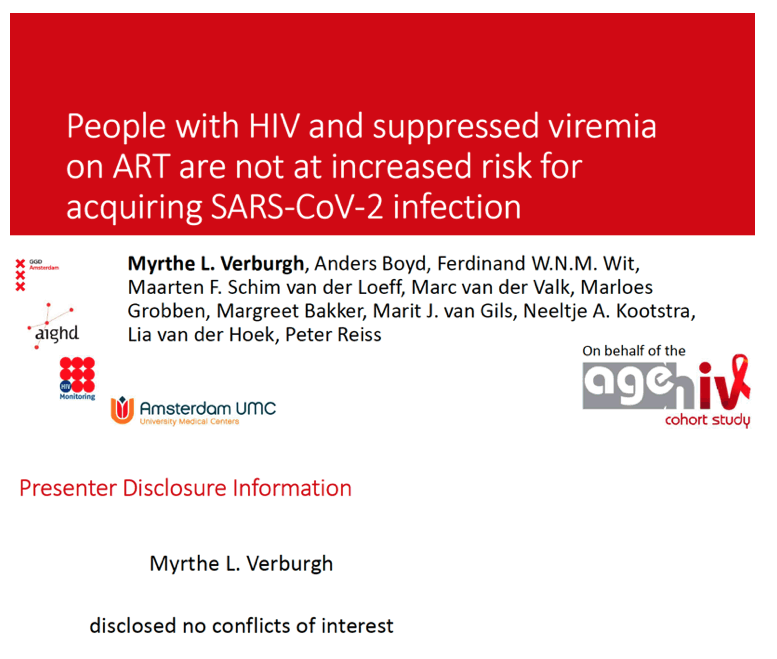
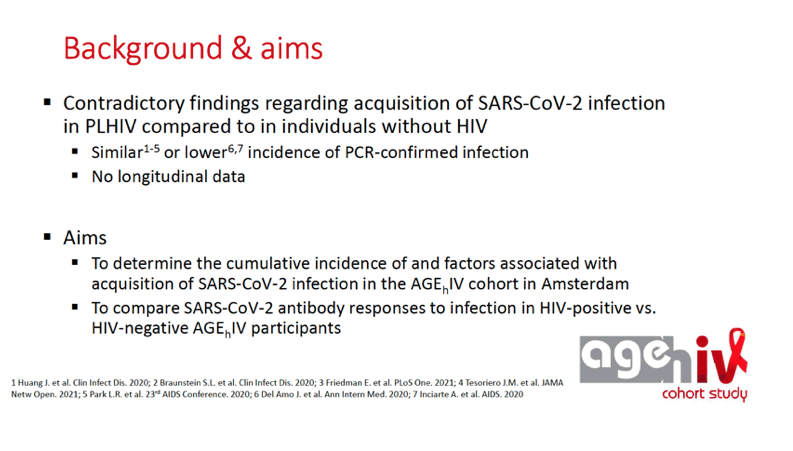
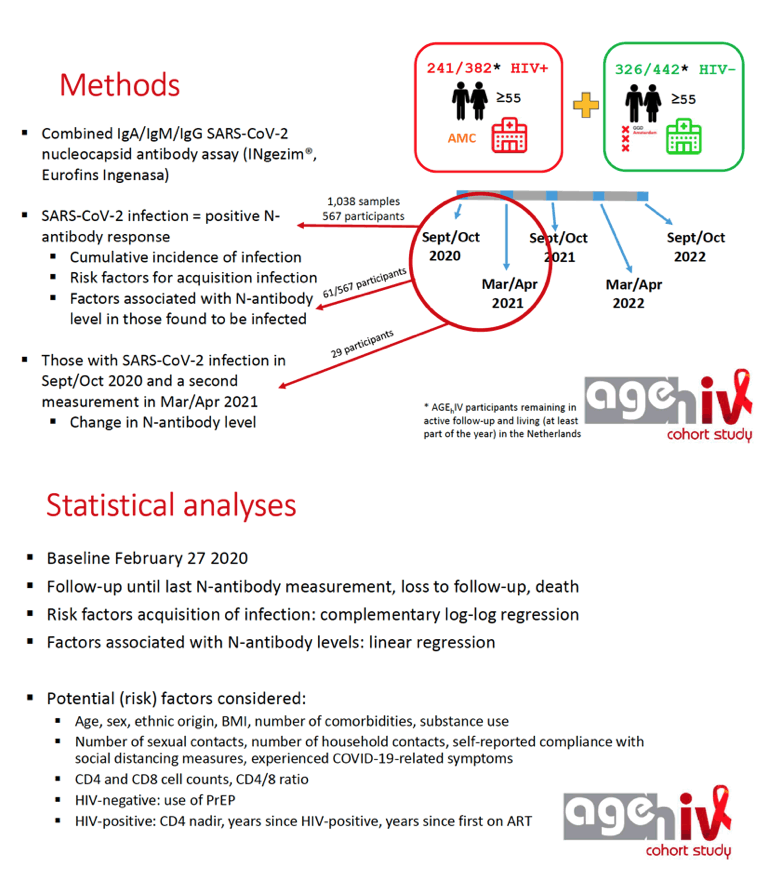
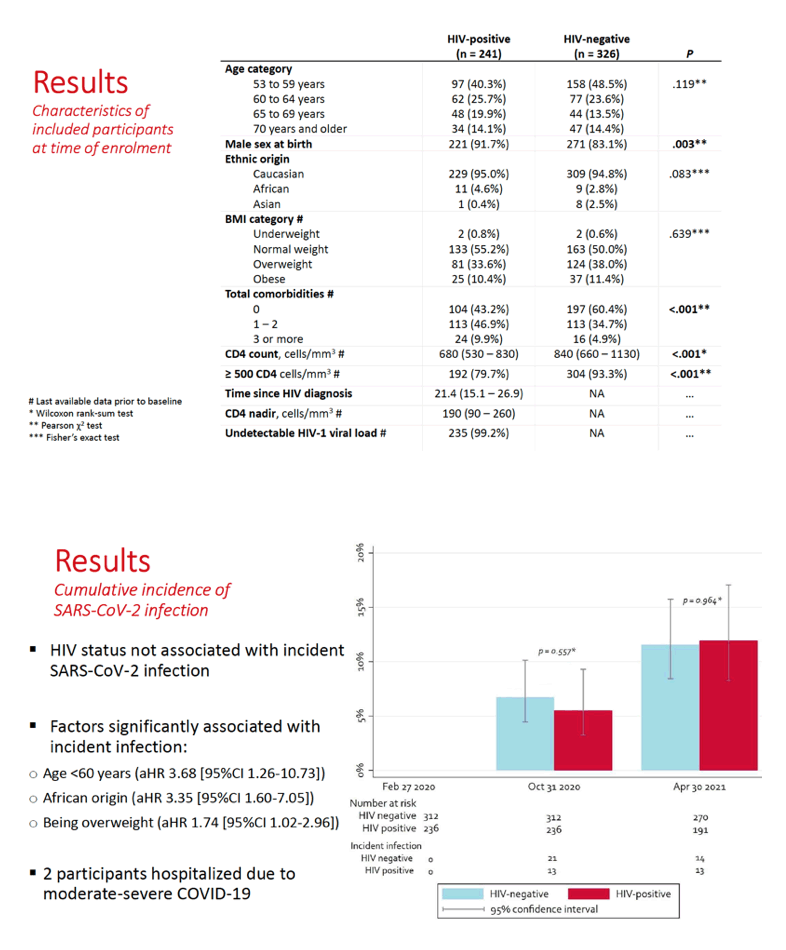
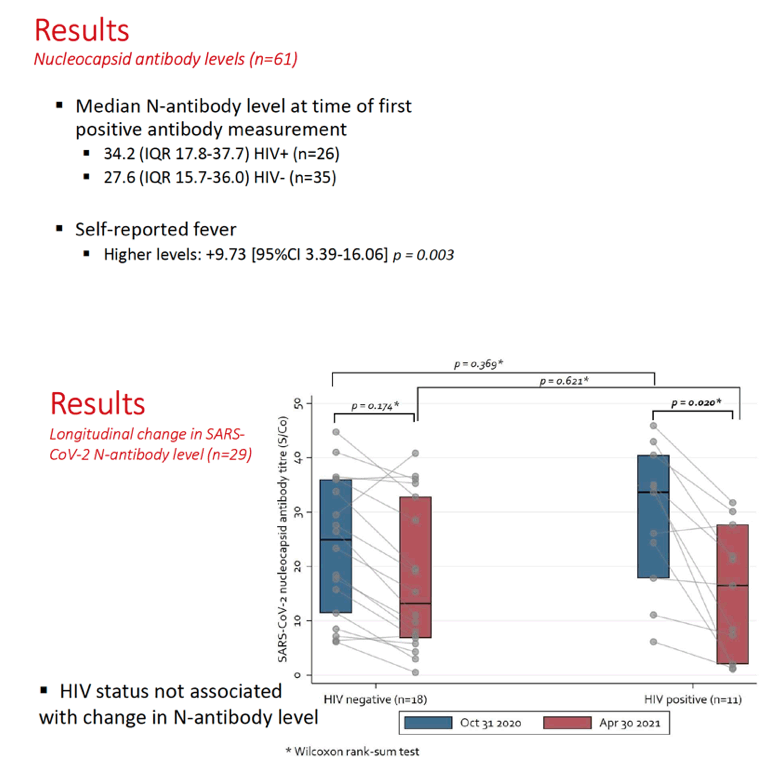
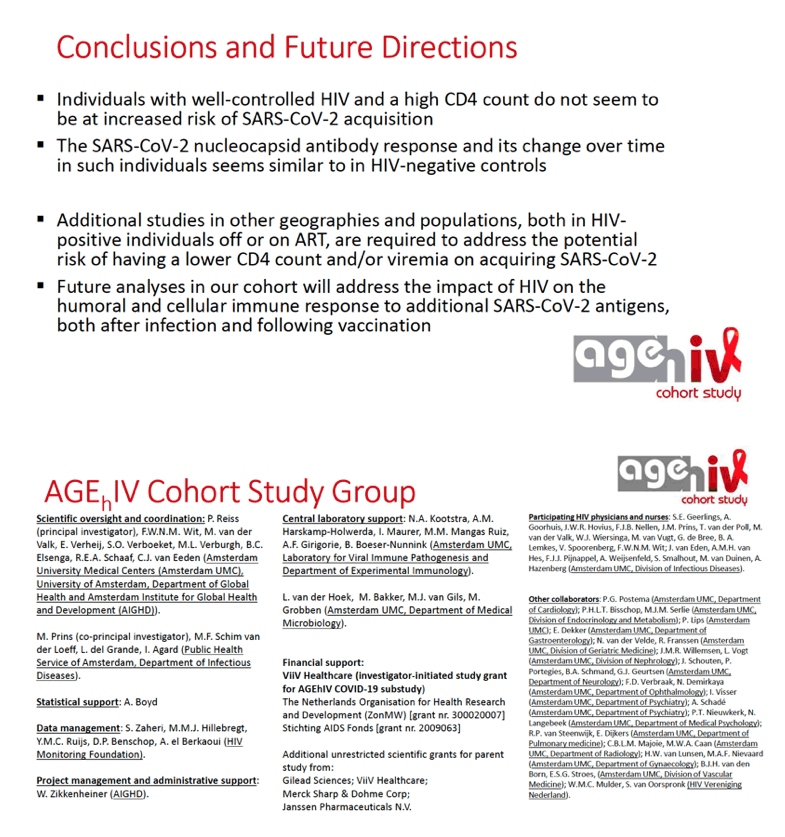
|
| |
|
 |
 |
|
|